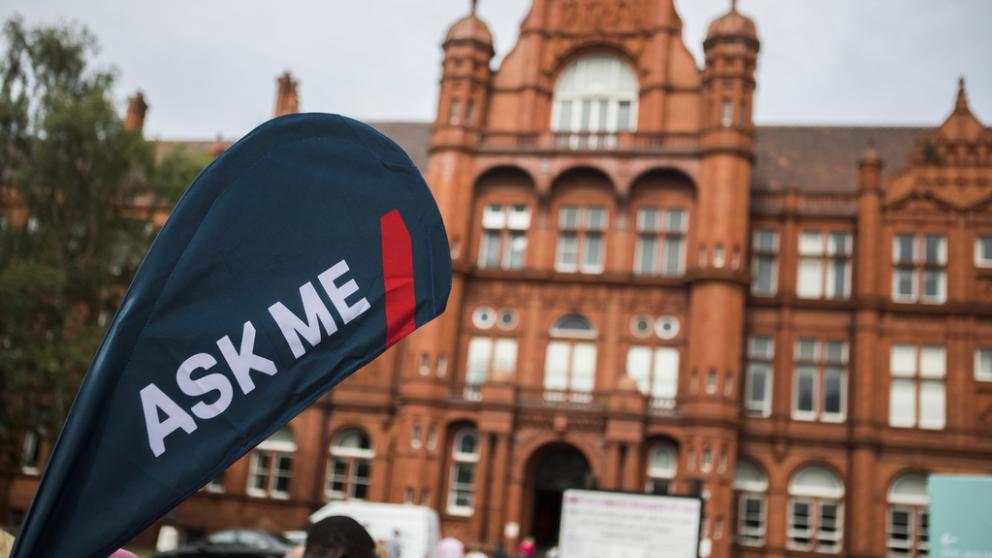Salford welcomed in Ukraine as part of collaborative research

The University of Salford's Professor Mike Wood, Chair in Applied Ecology, and Dr Maria Stukoff, Director of Makerspace, visited Ukraine last week to conduct research for a virtual reality (VR) app to teach young people about the Chernobyl exclusion zone.
In 2015, Mike worked with the university's THINKlab to produce the first version of ‘Virtual Chernobyl’ – a VR experience which was created to encourage public engagement in science. This work contributed to Mike winning the Times Higher Education (THE) Research Project of the Year Award in 2016.
Now, he is collaborating with colleagues across the university and the State Agency of Ukraine for Exclusion Zone Management (SAUEZM) to create a new version of the app, helping to embed Salford research into education.
On the visit to Ukraine, Mike and Maria toured schools and universities in Kyiv and Ivankiv, speaking to young people. They used a combination of VR and a mini drone flying activity to help pupils learn more about the science behind the app.
The university's Maker Space facility created a physical environment to explain the research process, by printing a large-scale map of the exclusion zone, showcasing the main areas of Chernobyl. This was complete with 3D printed models of the famous Ferris wheel, animals which now occupy Chernobyl and the nuclear reactor.
Maria said: “This created the feeling that you were in a mini exclusion zone setting, so the research story could be told. It created a space where participants could learn to fly a mini drone and really understand the skills needed to make the research work.”
Students were then asked to identify questions they had surrounding Chernobyl, which included:
- Are there mutant animals?
- What is the effect of radiation?
- How long would I survive there?
- What will happen with the area in future?
Mike and Maria also met with teachers, to identify how their research could be embedded in the curriculum in future.
They were even invited to the British Ambassador’s residence, where Melinda Simmons herself experienced the current version of Virtual Chernobyl.
The information collected in Ukraine will be used over the next few months to inform development of a full app version of ‘Virtual Chernobyl 2’. Not only will it aim to engage the public, but it will also educate children to better understand radiation, ecology and the Chernobyl environment. After deployment in Ukraine, the app could be used to aid science education worldwide.
Mike said: “By engaging future users of Virtual Chernobyl 2 in the development process, we are ensuring that the final app and associated learning materials will support education across the STEM curriculum and beyond. I was told that the way pupils are taught about Chernobyl hasn’t really changed over time, so teachers and pupils alike are eager to benefit from the novel educational opportunities that we are creating.”
Virtual Chernobyl 2 is to be released in spring 2020.
For all press office enquiries please email communications@salford.ac.uk or phone 0161 295 2238.
Share:
